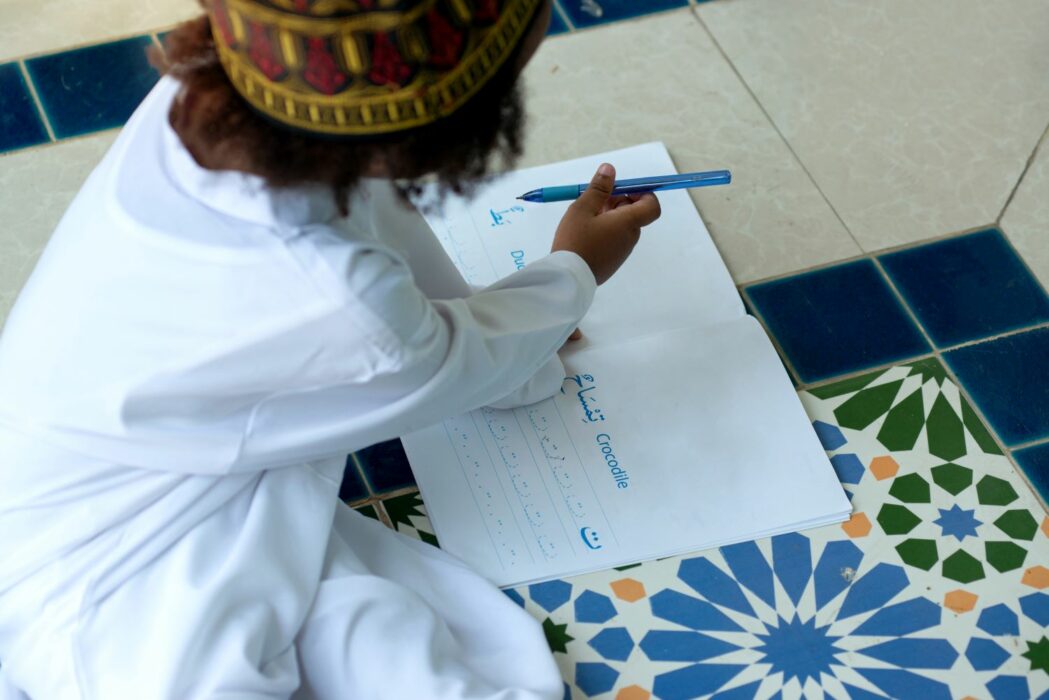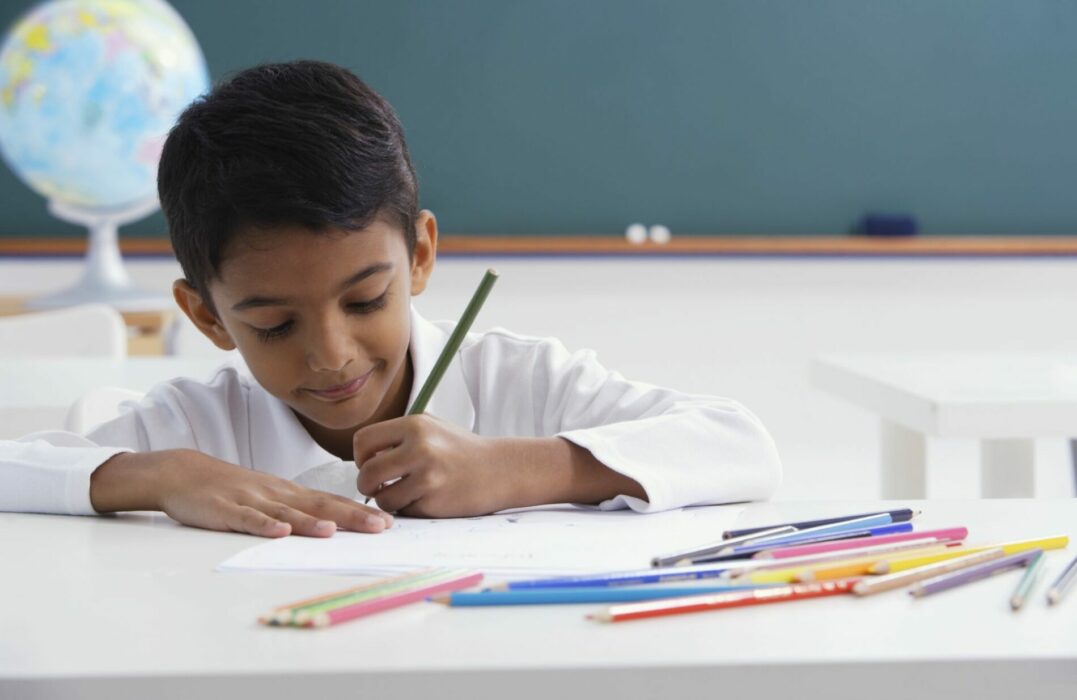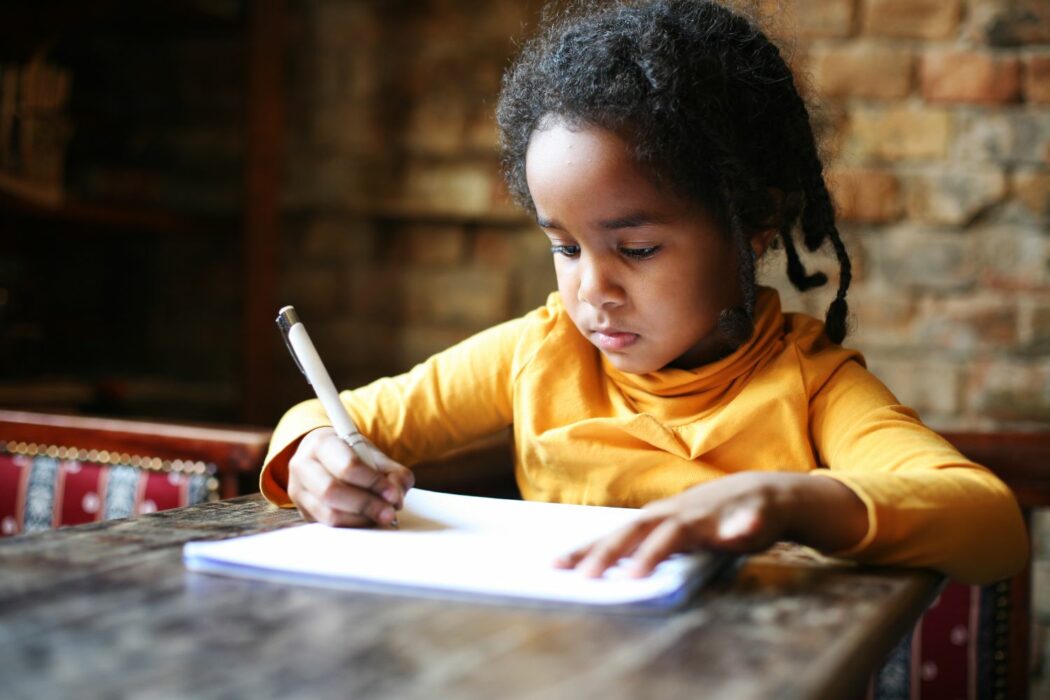The journey of learning to write
The ability to write is one of the building blocks of your child’s life. Learn how to guide your little one along this journey and look forward to reading their works of art!

THE IMPORTANCE OF HANDWRITING
These days, where children are comfortable typing on a phone or tablet from a young age, it’s more important than ever for them to develop the skill of handwriting. Learning to write opens up a whole world to your little one, and is essential for their education. Plus, a handwritten message brings a much more personal touch than something typed out on a computer!
As your child learns to write, they will also be developing their reading and spelling skills – making the early years of school much more manageable. Kids will be able to use their newly acquired skill to jot down any thoughts, ideas or plans that they have. The freedom to be able to put pen to paper and write whatever they want is unmatched.

LEARNING TO WRITE BY HAND
Learning handwriting is actually quite a lengthy and difficult process. There are so many different skills involved. For example, your little one’s memory will be tested as they try to remember all of the different strokes and shapes they need to put together to spell out a word. Simply holding a pen comfortably is something that can take time to get used to.
Encouragement is vital in the initial stages. Any opportunity for your little one to practise their handwriting will help them to build their confidence. As they move from scribbles to form letters and words, cheer them on and let them make mistakes!

WHAT IF MY CHILD IS LEFT-HANDED?
If your child happens to be left-handed, don’t worry at all. It’s better for them to write with whichever hand they prefer. Some issues may arise, such as their writing hand obscuring what they’re writing as they move across the page. This can make it harder for them to know where in the word or sentence they are and what to write next. However, they will get used to it and they can turn the page at a slight angle so they can better see their own writing.
DRAWING AND WRITING FOR TODDLERS
When children are around two years of age, you can expect them to begin to show an interest in drawing and writing. At first it will be lots of scribbles, but remember that this is a great sign and a new stage of development. There are plenty of ways to help your little one get started.

What medium to use?
Crayons and paper are some of the best tools to give your child at the first step of their writing journey. Chalk and a blackboard is another brilliant option, with much less waste as you can wipe the board clean once it’s full and start again. A mixture of both is often best as your child will love to see some of their early drawings in pride of place on the refrigerator or in a family scrapbook.
Keep it positive
Up to this point, they’ve probably been holding the crayon or chalk in their fist. If a crayon breaks, the smaller piece offers a great opportunity for your child to practise holding it in their fingertips, like a pen. Any other activities that will strengthen their fingertip grip will eventually make holding a pen much easier. Keep this new hobby as light and fun as possible, and don’t be afraid to get involved. You can draw objects for them to colour in, and vice versa. There are no rules, all that matters is that your child is happy and engaged.

Challenges that build kids’ skillset
As they progress, your child will move on from scribbles and start attempting to draw objects and animals and even a few letters. This requires more control of their crayon or chalk, so consider setting out some practice challenges that will help them advance. Drawing straight or curved lines is a fundamental aspect of writing and there are fun ways for your child to try this. For example, a paper maze where they have to draw a line from the entrance all the way to the goal is a really great method. You can also help them to learn to write their name – a very exciting milestone for any child!
WRITING IN SCHOOL
Once your child starts going to school, they will begin practising handwriting in earnest. Alongside learning to spell common words, they’ll be able to write these words for themselves. Further down the road, they’ll focus on writing letters and words in a consistent size and evenly spaced apart. On average, it can take up to two years of school for children to grasp the basics of writing by hand. Beyond that, they’ll be able to construct sentences and write about themselves and their interests. Putting in the groundwork in the preschool years will make the whole process a lot more straightforward and enjoyable.
PRACTICE MAKES PERFECT
Learning in school is one thing but it’s important to keep up the practice outside of school times too. This doesn’t need to feel like work. It can be an entertaining activity, and can be squeezed into normal parts of the day.
Writing for fun
One handy tip is to encourage children to write birthday cards and letters to their relatives. This will make them feel both important and grown-up as they let various family members know all about their hobbies and what they’ve been up to. Make sure to help them make their way through each letter and word, and let them take their time. If there’s a word that they’re struggling with, perhaps write it out faintly in pencil and then your little one can trace over it themselves.
If an opportunity arises for your child to practise their handwriting, take it. If you’re out walking on a beach, show them how to write their name in the sand with their finger. Similarly, they can lay out small stones to create big letters on the ground. It’s all about having fun as they learn.
The right environment and tools
For practising at home, try to provide your child with a comfortable place to write, with whatever tools they need close at hand. A flat, solid surface will help them to tackle tricky aspects of handwriting including consistent pressure on the page and writing in a straight line. Let them have fun with it and stay nearby to offer help and support should they need it. Soft grips or thicker pencils can make writing less of a strain on your child’s fingers and handwriting workbooks offer lots of activities to practise writing in an engaging way.
HANDWRITING DIFFICULTIES IN CHILDREN
It’s not unusual for children to have some difficulties when learning to write. Some may find it hard to create the shapes for each letter, to hold their pencil properly, or accidentally write the letters backwards. Concentration and focus can also be an issue, especially if your little one is finding the process hard.
Their attention can wander and they might even get frustrated. If any problems persist, consider having a conversation with their teacher about what could help. If you’re worried that your little one is finding it harder than normal to pay attention, or if they seem to be confusing different letters and struggling to read, consult their GP to see if there are any further resources that will help your child to reach their potential.
Handwriting is one of the building blocks of education and is essential for daily life. However, everyone learns at a different pace, so remember to let your child make mistakes and show them where they’ve gone wrong, while focusing on their achievements and celebrating their progress. Just wait until they write you a birthday card or a letter – it’s sure to melt your heart!












Comments